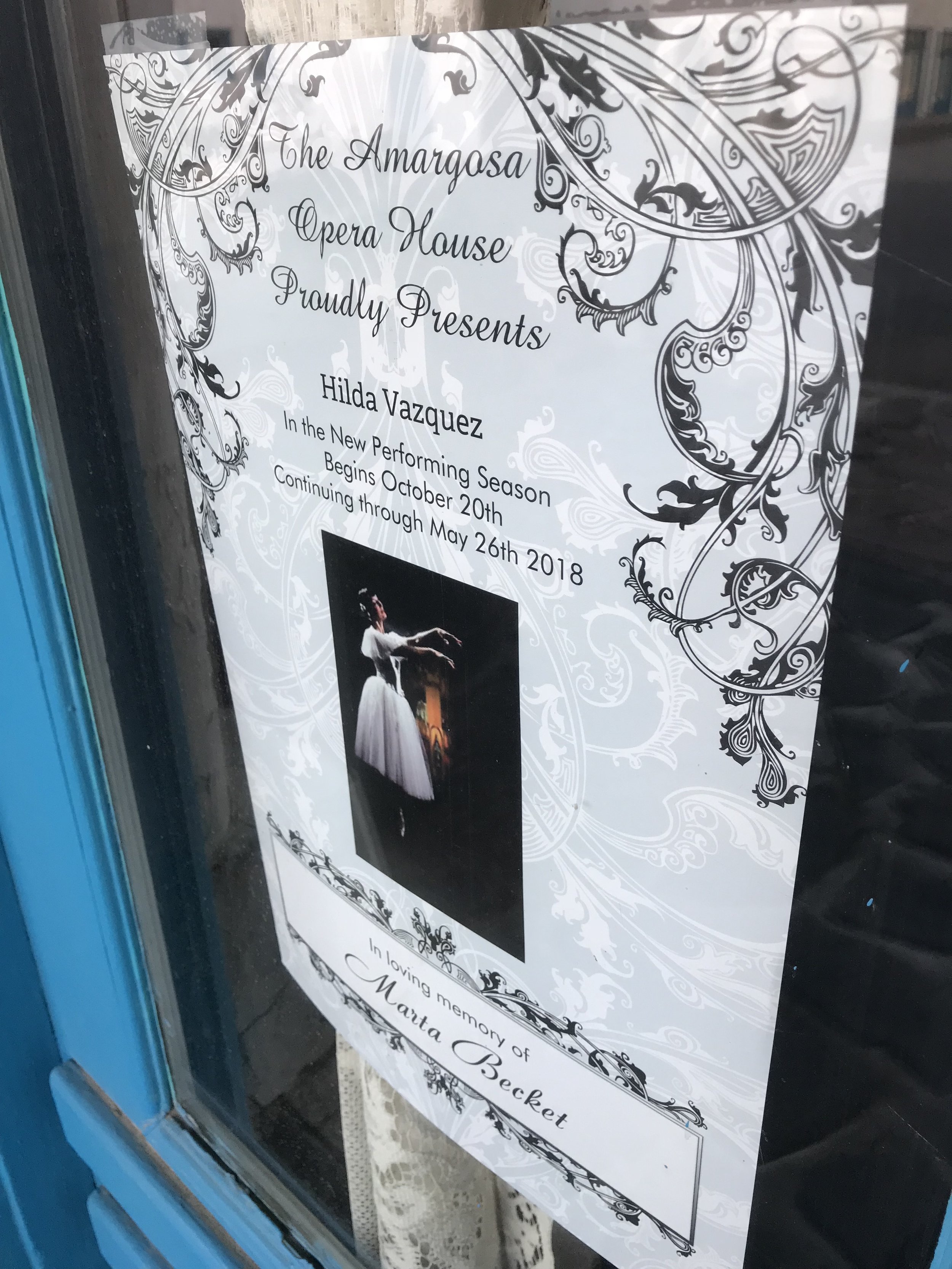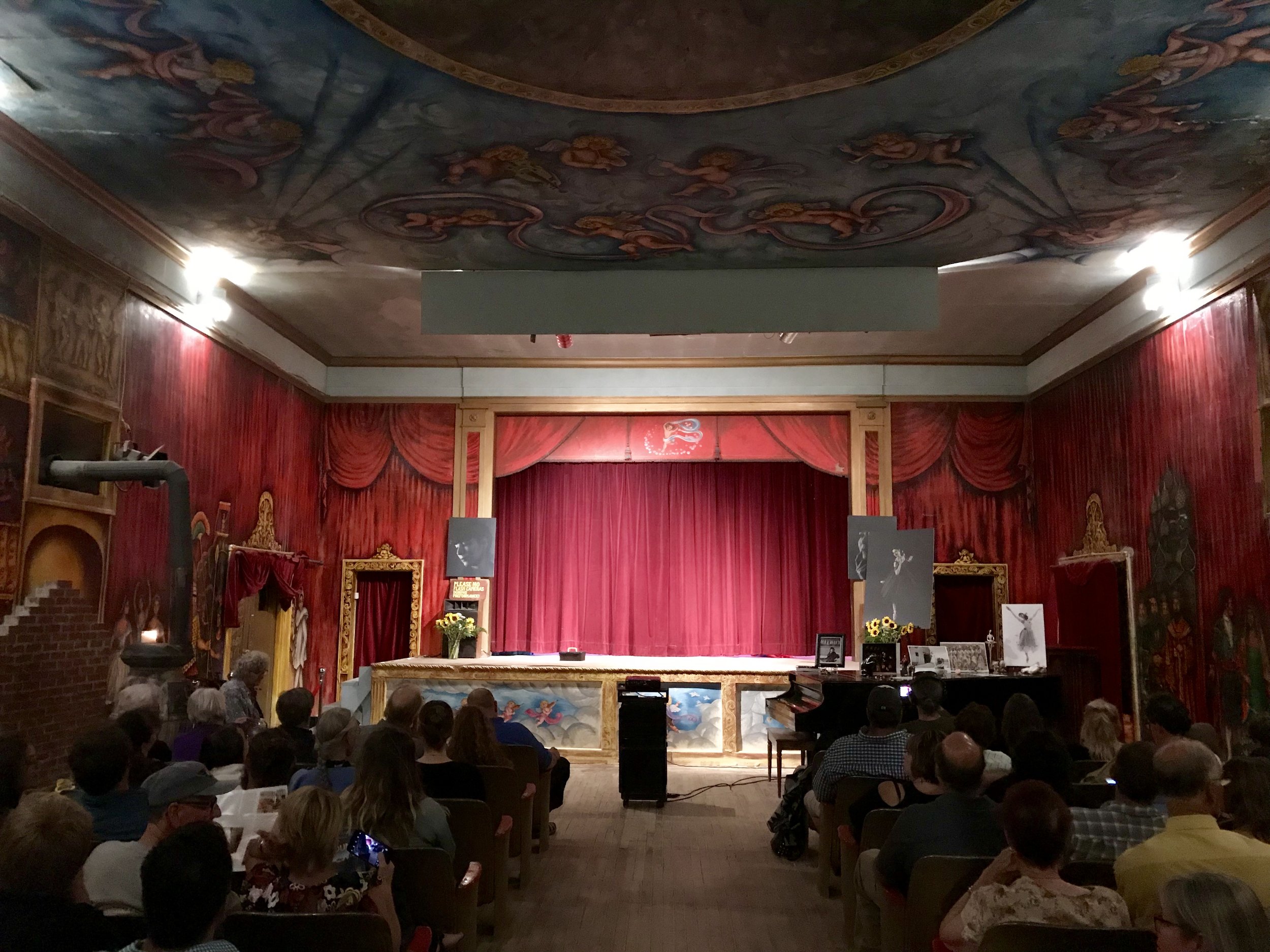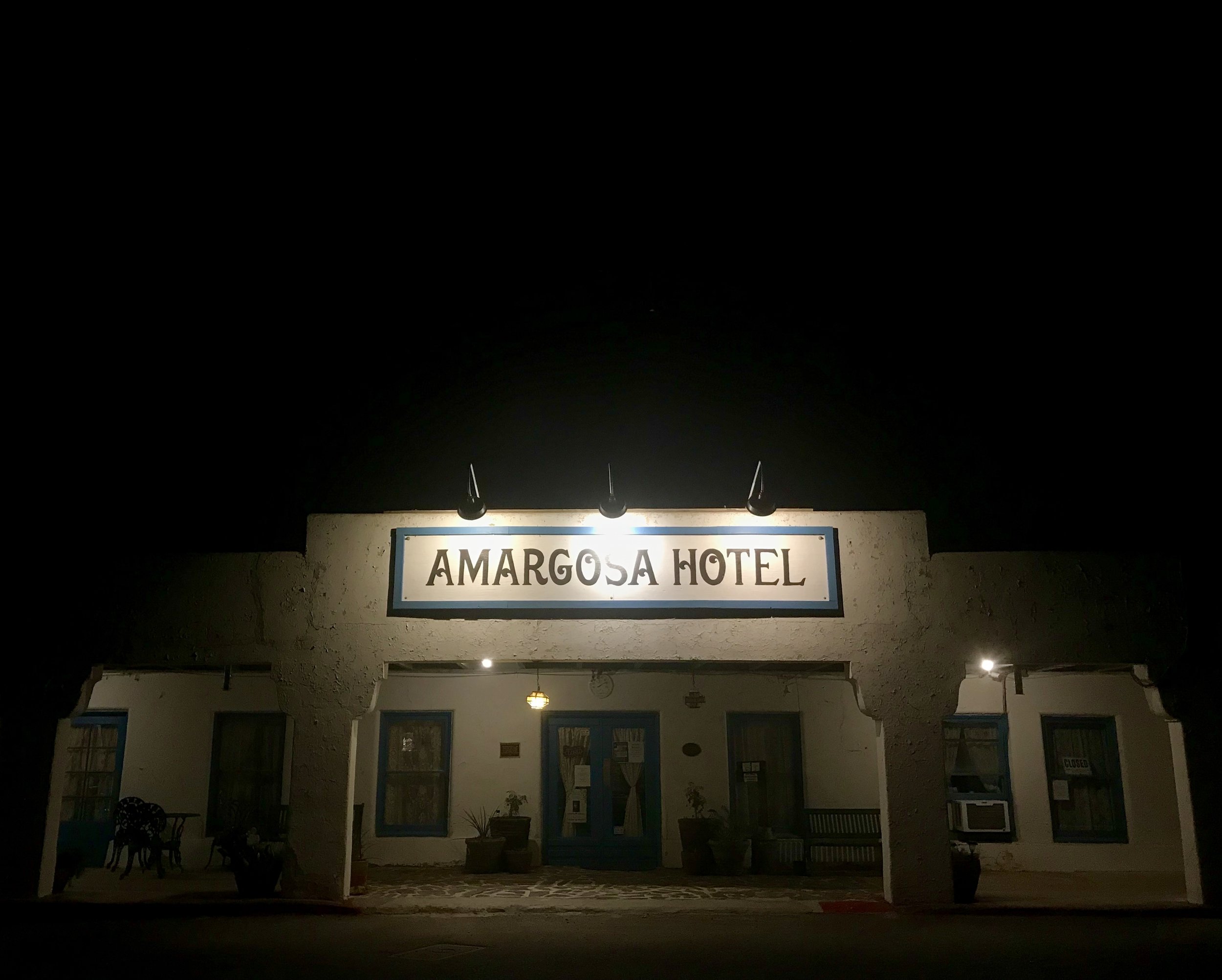The Best Story I Never Told
Soon after I returned to Las Vegas to work at KLAS, I was assigned a story in Death Valley. It was beautiful. I’d never been there before.
On the way back to the station, my photographer and I drove through the small town of Death Valley Junction, California.
There is very little there. It’s easy for things to standout, easy to see the words “Opera House” painted on the outside of building.
I was unaware of the Amargosa Opera House or its long existence as an artistic beacon in the middle of nowhere.
Soon, I researched the place, learned of its history, its longtime curator and its near death.
I had to tell this story.
The story was supposed to air on KLAS in November, 2017. Due to a technical glitch, almost all of the video was lost forever.
But the script remained.
Below is a reworked version of that television script as it would have been presented then.
It remains the best story no one will ever see.
—
It's late October in the middle of nowhere. Opening night, at the Amargosa Opera House.
It sits in the desert basin, Death Valley to be precise. The theatre lies at the end of a line of single-story hotel rooms. A transformed barracks from old mining days turned into a tiny, tourist oasis.
A gorgeous dusk formed above the isolation. Inside the theatre, seats filled up with one exception. Backstage, the star paced nervously.
“I’m just trying not to cry on stage,” said dancer Hilda Vazquez, “For me, this is all about Marta and all of her people are here to see a piece of her.”
On paper, Vazquez was the star of her own performance. When the curtain rose, she would be the only one on stage, assuming a kaleidoscope of characters. Still, she knew what the capacity audience of about 100 people knew.
The real star is Marta Becket. None of this would be possible without her.
—
“In a real hard-scrabble environment, the desert, where you’re challenged with everything. Water. Just survival itself. Marta thrived,” recalled Fred Conboy.
Conboy remembered when he first met Becket years ago. He saw the barracks new role as a hotel and went inside the opera house for the first time, complete with its own painted audience.
"I just immediately bonded with this woman,” said Conboy, who now serves as President of the hotel’s Board of Directors, “She had done this seemingly amazing and quite improbable thing...in the desert."
The Amargosa Opera House was Becket’s canvas. Her arrival in the desert is legendary. It was 1967. The ballet dancer and artist was driving through from New York, her tire blew. She never left.
As she explained, Death Valley Junction became, “the permanent home for characters, my dances, my painted audience and future creations."
In January 2017, Becket passed away. She was 92. Vazquez was her final prodigy. Responsible for carrying on Becket’s unique, quirky and beautiful legacy.
“A genius,” Vazquez described, “I promised (Marta) I won’t change a thing. I’ll do my best. Then, she said, ‘see you later, alligator!’ I said, ‘in a while crocodile!’
“That was it. I never saw her again.”
—
Becket’s passing filled the Death Valley Junction community with grief. It also opened a wound that had grown in her final years. Financial mismanagement.
“It was a bit precarious,” said Conboy.
Deferred payments and unpaid taxes rose to a crescendo that nearly brought the opera house and hotel to its knees.
“There was a time when we thought there might be a foreclosure,” continued Conboy, “We nearly went to a fire sale.”
Like any good drama, there was a savior. Conboy and others helped straighten out the books. Now a non-profit in good standing, the Amargosa Opera House aims to continue its artistic mission.
—
This then was opening night. The first without Becket sitting in her chosen front row chair. On this night, it was peppered with flowers. Even though Becket was gone her presence lingered backstage as Vazquez began.
“I hear her voice,” she said, “She’s like, do this. Do that.”
Faded music played over the hushed crowd. Vazquez twirled on the rickety old stage doing what she thought Marta would approve.
The scratchy audio played Marta’s own voice introducing her successor. A population of one onstage before the curator’s closest friends and admirers.
“It was difficult to see any part of this,” said one of Marta’s former co-workers, “She’d be sitting in this chair right here and enjoying every minute of it.”
If Marta Becket danced into Death Valley by accident, friends say she is still here "dancing on sands." As long as the opera house remains, her work will never be done.
“If you miss here and you come here, you’ll find peace,” said Vazquez, “You’ll feel like you’re with her.





